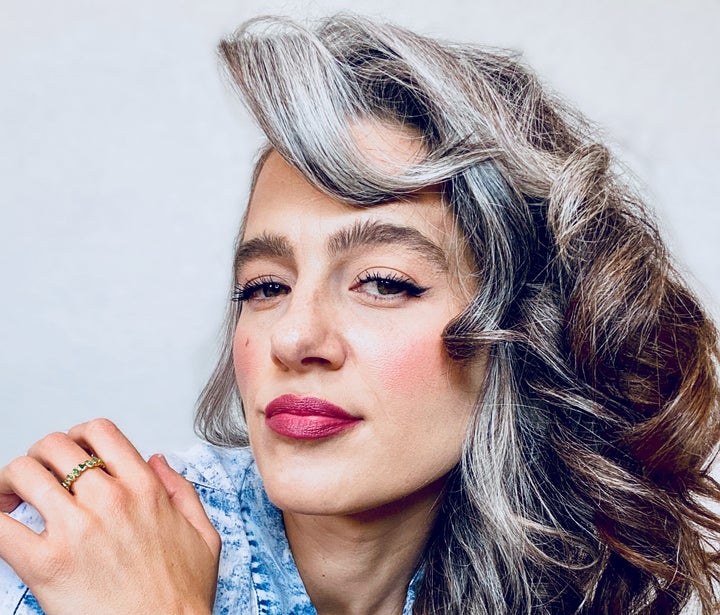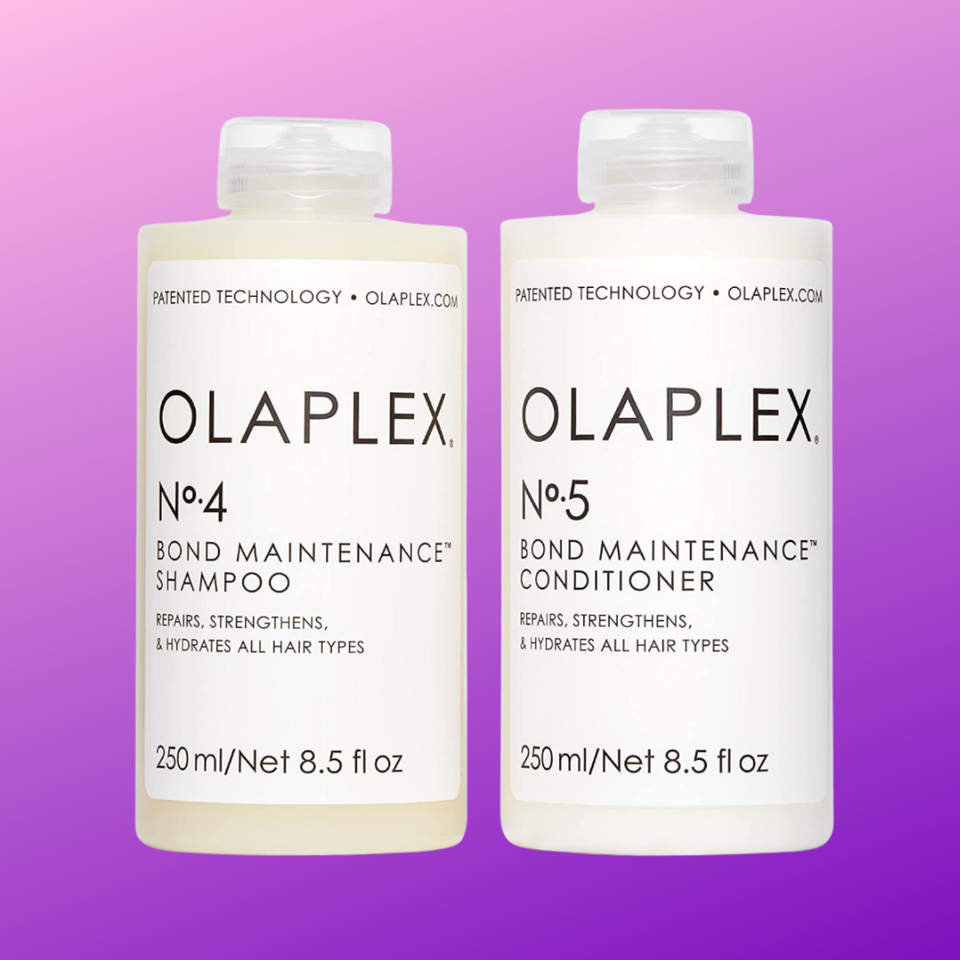
Maybe it happened when you had to make another salon appointment for a roots touch-up. Or maybe it’s because you noticed a lovely gray-haired person and thought, “Could I pull off that look?” Or possibly you’re just tired of hiding behind the dye on your head, when there’s an aged-to-perfection dynamo trapped inside who can’t wait to get out.
So here you are, reading an article about gentler, easier advice on going gray. We have tips from those who’ve done it themselves and from stylists who help people make that long, careful leap all the time — while emerging on the other side, looking fabulous.
Are you ready for this?
First, let’s acknowledge that there still are plenty of good reasons for continuing to dye your hair, even if some of them are based in fear that you need to keep doing it as you get older. “I find that hair dye use is more common among people who work public-facing jobs or any kind of competitive field where appearance is a factor,” said Mirza Batanovic, style director for hair care company Eufora International. “People will choose to cover the gray to keep up with appearances and younger competitors.”
And then there’s the “I’m not old; I’m actually only 28, right?” factor. “We all want to look and feel young, and we want to hold on to our youth,” stylist Rod Anker said. “For so many, even the thought of having a head full of gray hair makes them feel older.”
Those factors may be true, but are there positives to embracing the gray? Yes, said Cassie Siskovic, U.S. artistic director of hair, facial and body care company Alfaparf Milano. “Beauty continues to evolve and change, and wearing natural gray hair is a wonderful way to express your individual beauty,” she said.
Meet someone who did it
Whitney Lichty’s hair has been dye-free for more than two years, and now she’s “feeling as confident and empowered as ever.” On her Silver Strands of Glitter Instagram page, she proudly models her gray-locks-looks for more than 100,000 followers. “Through social platforms like Instagram, I’m able to connect with thousands of people, worldwide, who are on their same journey,” she said.
She acknowledged that it isn’t always easy: “You’re left with a growing line on your head as you patiently wait for the dyed hair to grow out. Insecurities can creep up, and comments and stares from loved ones and strangers can leave you feeling self-conscious. It can be a lot to process, and it’s a bigger commitment than people are ready to make.”
Her advice? “I would suggest surrounding yourself with cheerleaders and people who will encourage and support you, whether that support is coming from close to home or from the many online social platforms with people on the same journey as you,” she said.
How to do a slow transition
First, you need to prepare yourself for “the talk” with your stylist, who’s gotten used to seeing lots more of you as the gray hairs have crept in. Most likely, they’ll be understanding. “As much as they’ll miss having you in the color chair, stylists want to help,” said stylist Michelle Cleveland. So spill the beans and make a plan, already. And that plan will need to take into account your timing, hair type, dye type and more.
“It’s a different approach for everyone,” Anker said. “I always like to start by coloring with less coverage — so instead of full 100% coverage, we start with slight translucent coverage of about 75%. It softens the regrowth and allows clients to get used to seeing something a little different that’s one step closer to the goals.”
From there, Anker begins to drop coverage to about 50% over a period of two or three months. “Then you can add highlights or simply stop coloring your hair altogether. It takes longer to do it this way, but it’s gentle on the hair, and it’s a good choice for anyone who’s a little anxious about the process.”
Keeping it looking good
Keep in mind that as you’re dealing with a new head of hair, daily maintenance will probably be different than you’re used to. “Gray hair is void of melanin, the pigment that gives your hair its color,” Batanovic explained. “Melanin typically has moisture content and fats attached, so once it’s gone, hair can feel coarser and dryer than even colored hair.” And then there’s the shine factor. “Gray hair won’t shine like chemically colored hair,” Anker said. “The lighter color absorbs light instead of reflecting it.”
To maintain your newly gray locks, you’ll need to arm yourself with the right products and treatments. Many experts mentioned purple shampoos and other purple products, which help brighten hair and keep yellow tones at bay. “I recommend Aloxxi’s Violet Shampoo and its InstaBoost color depositing conditioner mask,” master colorist Jessica Wall-Innella told HuffPost. “Start with Strictly Platinum or Silver Fox.”
This could be a good time to book some in-salon services, too, now that you’re saving so much money by skipping coloring sessions. “I recommend a glaze every so often to keep the tone and shine, and then using a clarifying shampoo a few times a week as it’s growing out,” said stylist Jennifer Korab. You might also want to increase the frequency of deep conditioning and heat protectant treatments.
Once you start looking, you’ll find there’s no shortage of companies that are more than willing to help you make the best of your new look. Jenniffer Paulson is vice president of marketing for Go Gray, which sells products “for every state of your go gray journey.”
“We see products for every type of hair, from blond hair, to curly, to straight hair, but there isn’t much in the way of gray transitional hair,” Paulson said. “We have products for men and women who are going on a natural gray journey. Everything is specifically designed to address the concerns of transitions, but also to keep the hair moisturized and healthy-looking throughout the process.”
The final key to taking care of your locks as they grow out? “Regular haircuts!” Siskovic said.
Do’s and don’ts
Visual evidence: “I recommend taking pictures, lots of pictures,” Lichty said. “When you’re purposefully growing out your roots, time can feel like it’s at a standstill. There were months when I wasn’t even sure my hair was growing at all. Documenting your growth can be a great visual representation along the way.”
Freestyling: “A big mistake is attempting dye removal at home,” Wall-Innella said. “Without a full understanding of color, some have tried to remove their previously colored hair themselves. This usually results in an expensive color-correction process.” (In other words, you’ll end up spending time and money back at the salon anyway.)
Be nice: “Always speak kindly to yourself,” Lichty said. “Growing your natural gray hair can be emotionally complex. When you’re feeling discouraged, speak kindly and confidently to yourself, and take it one day at a time.”
Hang in there with your stylist: “A great partnership with your stylist is key for a successful transition,” Wall-Innella said. “Don’t listen to others when making the transition. Do what’s best for you, stay the course, and remember that patience is key.”
